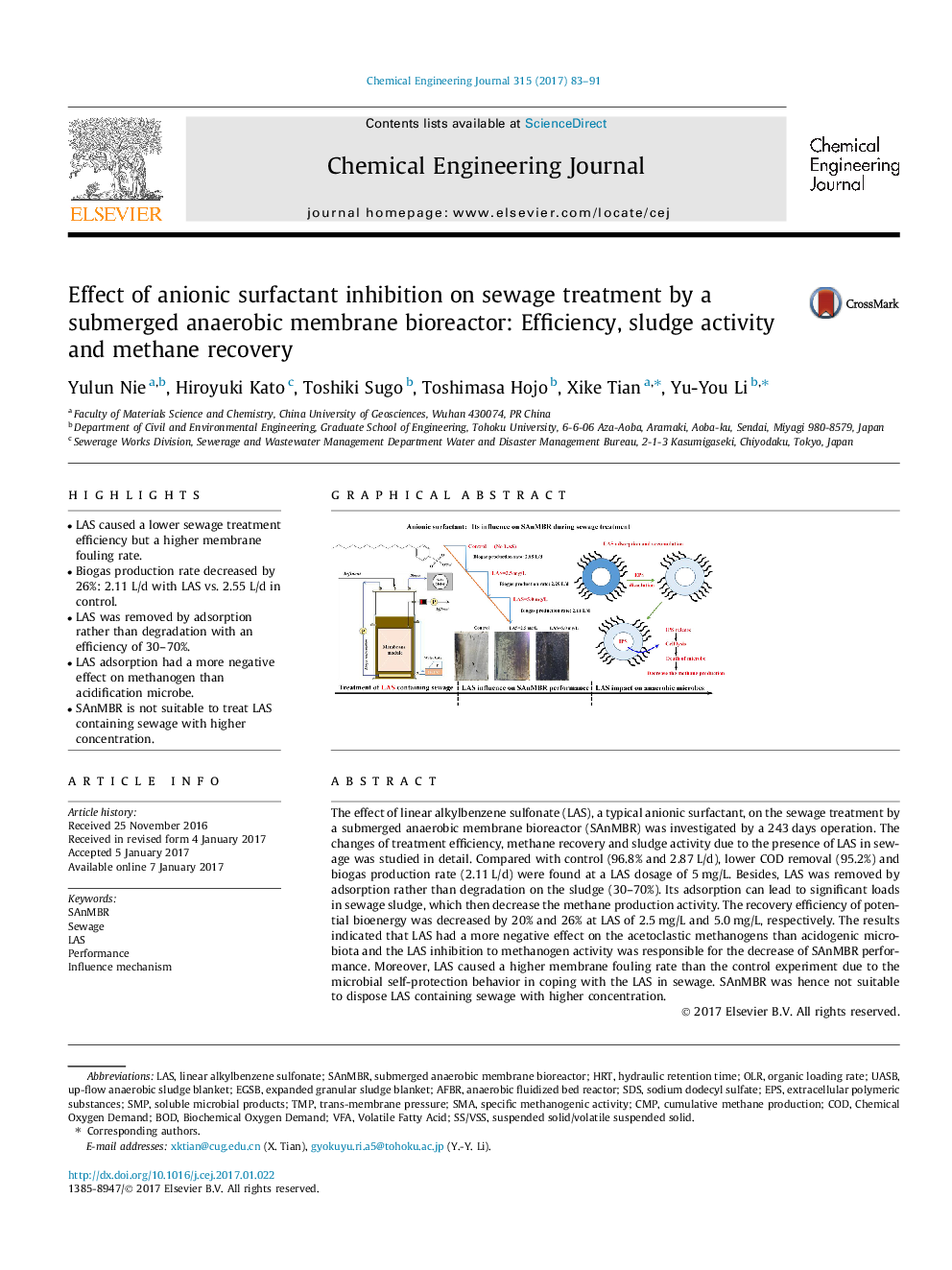| Article ID | Journal | Published Year | Pages | File Type |
|---|---|---|---|---|
| 6466299 | Chemical Engineering Journal | 2017 | 9 Pages |
â¢LAS caused a lower sewage treatment efficiency but a higher membrane fouling rate.â¢Biogas production rate decreased by 26%: 2.11 L/d with LAS vs. 2.55 L/d in control.â¢LAS was removed by adsorption rather than degradation with an efficiency of 30-70%.â¢LAS adsorption had a more negative effect on methanogen than acidification microbe.â¢SAnMBR is not suitable to treat LAS containing sewage with higher concentration.
The effect of linear alkylbenzene sulfonate (LAS), a typical anionic surfactant, on the sewage treatment by a submerged anaerobic membrane bioreactor (SAnMBR) was investigated by a 243Â days operation. The changes of treatment efficiency, methane recovery and sludge activity due to the presence of LAS in sewage was studied in detail. Compared with control (96.8% and 2.87Â L/d), lower COD removal (95.2%) and biogas production rate (2.11Â L/d) were found at a LAS dosage of 5Â mg/L. Besides, LAS was removed by adsorption rather than degradation on the sludge (30-70%). Its adsorption can lead to significant loads in sewage sludge, which then decrease the methane production activity. The recovery efficiency of potential bioenergy was decreased by 20% and 26% at LAS of 2.5Â mg/L and 5.0Â mg/L, respectively. The results indicated that LAS had a more negative effect on the acetoclastic methanogens than acidogenic microbiota and the LAS inhibition to methanogen activity was responsible for the decrease of SAnMBR performance. Moreover, LAS caused a higher membrane fouling rate than the control experiment due to the microbial self-protection behavior in coping with the LAS in sewage. SAnMBR was hence not suitable to dispose LAS containing sewage with higher concentration.
Graphical abstractDownload high-res image (118KB)Download full-size image
